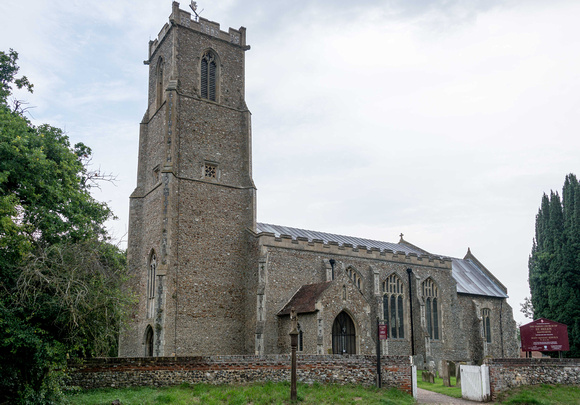The treasures of St Helen are very well-known, so I will not attempt to surprise you with them. (not to me they are!!!)Two are virtually unique, the third the finest of its kind. The first of them sits just inside the door, the Ranworth Antiphoner, a large singing book now in a bullet-proof glass case. This illuminated manuscript was produced at Langley Abbey, and used in this church before the Reformation, and then disappeared for three hundred years. In the 1850s, it was discovered in the collection of the merchant banker Henry Huth, but it was not until its sale in 1912 that it was recognised as coming from Ranworth originally. By one of those miracles that sometimes happens at the right time, it was bought and returned here. Tom tells me that for many years it was kept in a room on the tower stairs.
A further research reveals -
The
Ranworth Antiphoner is a 15th-century
illuminated antiphoner of the
Sarum Rite). It was commissioned for St. Helen's Church,
Ranworth, where it is now on display. The volume comprises 285
vellum pages of writing and illustrations, with daily services in
medieval Latin and 19 miniatures.
The manuscript was probably the Antiphoner bequeathed to the church in 1478 by William Cobbe.
[1] Previously thought to have been produced by the monks of
Langley Abbey, examinations of the illuminations suggest that the Antiphoner was manufactured by a Norwich workshop - a basic antiphoner could be produced on spec., and personalised to order.
[2] Two things may back this up: 1) the insertion at the end, out of order, of the office of St Helen; 2) Revd. Enraght's suggestion of a terminus post quem non of 1443, owing to the lack of a feast of St Raphael, which was instituted in that year.
The Antiphoner miraculously survived the Reformation, probably thanks to the local Holdych family. It fell into private hands, including, in the 1850s, those of
Henry Huth, and eventually re-surfaced at auction in 1912, where it was bought and returned to St. Helen's.


